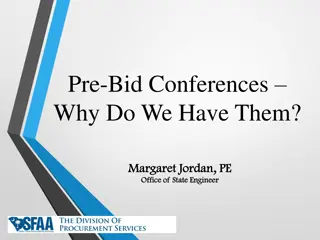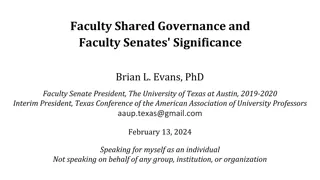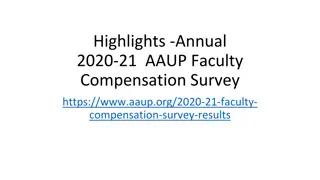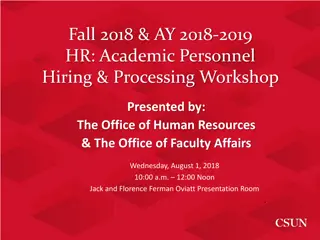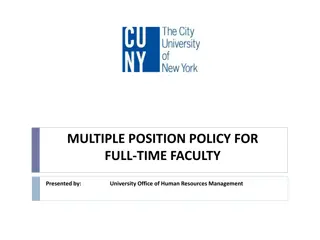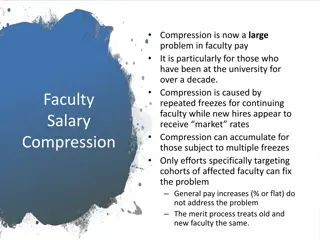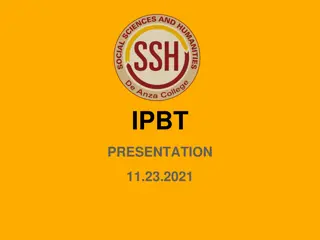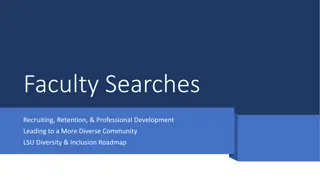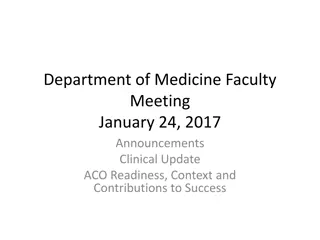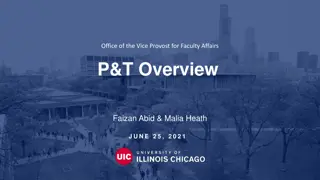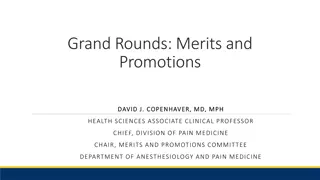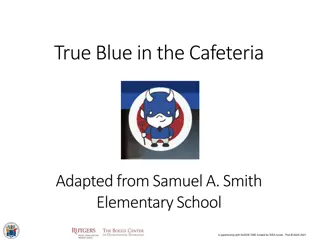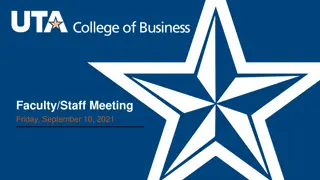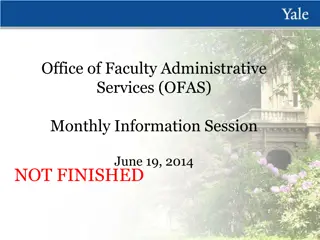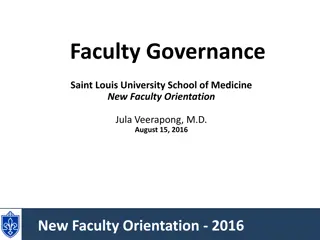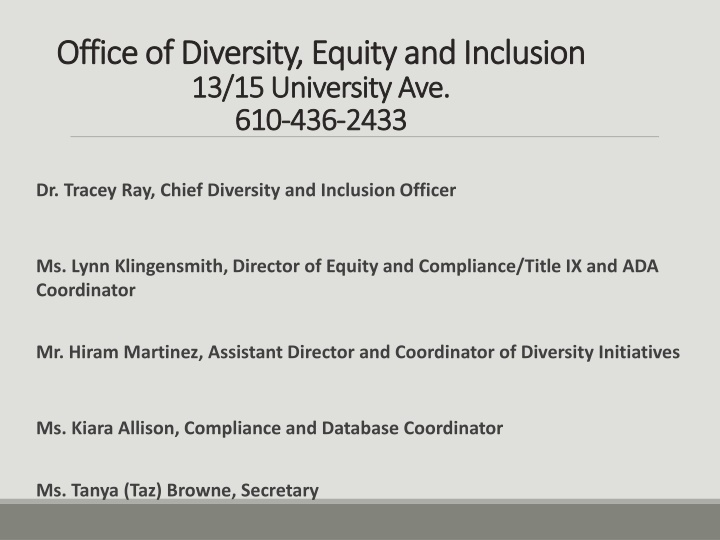
Discrimination and Harassment in Diversity and Inclusion
Explore the definitions of discrimination and harassment based on protected characteristics in the context of diversity, equity, and inclusion. Learn about Title IX, non-discrimination policies, and your rights regarding sexual misconduct.
Download Presentation

Please find below an Image/Link to download the presentation.
The content on the website is provided AS IS for your information and personal use only. It may not be sold, licensed, or shared on other websites without obtaining consent from the author. If you encounter any issues during the download, it is possible that the publisher has removed the file from their server.
You are allowed to download the files provided on this website for personal or commercial use, subject to the condition that they are used lawfully. All files are the property of their respective owners.
The content on the website is provided AS IS for your information and personal use only. It may not be sold, licensed, or shared on other websites without obtaining consent from the author.
E N D
Presentation Transcript
Office of Diversity, Equity and Inclusion Office of Diversity, Equity and Inclusion 13/15 University Ave. 13/15 University Ave. 610 610- -436 436- -2433 2433 Dr. Tracey Ray, Chief Diversity and Inclusion Officer Ms. Lynn Klingensmith, Director of Equity and Compliance/Title IX and ADA Coordinator Mr. Hiram Martinez, Assistant Director and Coordinator of Diversity Initiatives Ms. Kiara Allison, Compliance and Database Coordinator Ms. Tanya (Taz) Browne, Secretary
Todays Objectives Today s Objectives Overview of the Office of Diversity, Equity and Inclusion Highlight the WCU non-discrimination policies Define sexual harassment and discrimination Title IX and Sexual Misconduct Policy Discuss your rights and responsibilities
Discrimination An adverse employment or academic action or decision that is based on or motivated by an individual s: Race Color Religion Sex Gender Identity National or ethnic origin Ancestry Age Sexual orientation Disability Veteran status
Harassment Harassment, whether verbal, physical, or visual, that is based on any of these protected characteristics is discriminatory. Includes harassing conduct affecting tangible job benefits, interfering unreasonably with an individual s work performance, or creating what a reasonable person would believe is an intimidating, hostile, or offensive environment. Behavior based on race, color, religion, sex, gender identity, national or ethnic origin, ancestry, age, sexual orientation, disability, or veteran status that is: Sufficiently severe, persistent, or pervasive, or Experienced as substantially interfering with an individual s work, educational performance, participation in extra-curricular activities, or equal access to the University s resources and opportunities.
Examples of Harassing Behaviors Unwelcome comments/name-calling Racial, ethnic, or religious epithets Offensive pictures/photos/cartoons Refusing reasonable accommodations to individuals with disabilities
Sexual Harassment A form of unlawful discrimination based on sex and will not be tolerated in any form by faculty, staff, students or vendors. Title IX of the Educational Amendments Act of 1972: No person in the United States shall, on the basis of sex, be excluded from participation in, be denied the benefits of, or be subjected to discrimination under any education program or activity receiving Federal financial assistance.
What is Sexual Harassment? Sexual harassment is defined as unwelcome sexual advances, requests for sexual favors, and other harassing conduct of a sexual nature. Conduct Unwelcome Persistent and/or severe
What is Sexual Harassment? Sexual harassment occurs when: Submission is clearly stated or implied as a term or condition of employment, status in a course, program or activity. An employee's submission to or rejection of the conduct is a basis for employment or academic decisions. Such conduct unreasonably interferes with work performance or creates an intimidating, hostile or offensive work environment.
What IS Sexual Harassment? Creates an intimidating, hostile, or abusive living, working or educational environment. Sexual violence is a form of sexual harassment and includes all physical acts perpetrated against a person s will or when a person is unable to give consent due to the victim s use of drugs, alcohol or disability. Physical sexual acts include rape, sexual assault, sexual battery, sexual coercion, stalking and relationship or domestic violence. Faculty and staff are required to inform the Director of Equity and Compliance/Title IX Coordinator whenever they become aware of behavior that may constitute sexual harassment, whether the behavior involves students or employees. Employees are cautioned not to promise confidentiality when learning about sexual harassment as they are required to report this behavior.
Examples of Sexual Harassment Direct or implied threats to obtain sexual favors Bribes or promises of a benefit in return for sexual favors Touching, patting pinching, brushing against another person Comments or jokes made in person, by phone or by email Sexually explicit questions Repeated requests for dates Sexually suggestive sounds, gestures, looks Posters, graffiti or other graphics of a sexual nature Sexual assault, sexual violence, stalking
Consensual Relationships West Chester University discourages romantic or sexual relationships between faculty or staff and students, as well as between supervisors and subordinates. Because of the inherently unequal nature of a relationship where one person supervises, advises, or evaluates the other, the apparent consensual status of a romantic or sexual relationship between such parties is suspect even when both people have given voluntary consent. Consensual relationships create: Concerns about validity of consent Conflicts of interest Unfair treatment of other students or employees Undermine the atmosphere of trust
Harassment Harassment, whether verbal, physical, or visual, that is based on any of these protected characteristics is discriminatory. Includes harassing conduct affecting tangible job benefits, interfering unreasonably with an individual s work performance, or creating what a reasonable person would believe is an intimidating, hostile, or offensive environment. Behavior based on race, color, religion, sex, gender identity, national or ethnic origin, ancestry, age, sexual orientation, disability, or veteran status that is: Sufficiently severe, persistent, or pervasive, or Experienced as substantially interfering with an individual s work, educational performance, participation in extra-curricular activities, or equal access to the University s resources and opportunities.
The Americans with Disabilities Act (ADA) Protects qualified persons with disabilities from discrimination in employment, education, public services and programs, transportation, public accommodations, and telecommunications. Employees seeking an accommodation for a disability should consult with Human Resources. Students seeking accommodations should contact the Office of Services for Students with Disabilities. Faculty are under a legal obligation to provide accommodations to students who submit a Letter of Accommodation from OSSD. If there are questions or concerns, faculty should contact the OSSD Office http://www.wcupa.edu/ussss/ossd/ Faculty are required to complete the module. Detailed instructions will be sent by email.
Disability Disability is defined as: Physical or mental impairment which substantially limits a major life activity; Record of impairment; Human Resources services (employees) Office of Services for Students with Disabilities (students) Being regarded as having such impairment.
Procedures for Reporting and Investigating Discrimination/Harassment Complaints Share concerns with the Office of Social Equity. Review informal and formal options for resolution. The Office of Social Equity maintains records of all formal and informal complaints. The Office of Social Equity monitors repeated complaints within the same unit or against the same individual.
Formal Complaint Procedures Purpose: To determine if sexual harassment and/or discrimination has occurred, the culpability of the alleged offender, appropriate sanctions or remedies. How to initiate: Contact Office of Diversity, Equity and Inclusion to file a written complaint. Investigation: Required if the complaint sufficiently outlines discrimination or harassment. If not, it may be referred under an alternative administrative policy. Timeliness: Encouraged to report within 180 calendar days. Outcomes: If allegation of sexual harassment and/or discrimination is substantiated, a variety of sanctions may be applied through appropriate disciplinary process.
Informal Complaint Procedures Purpose: To stop the behavior. Should not be used for repeated or serious offenses. Will not be used in the case of sexual assault. How to initiate: Generally, a written complaint is filed with the Social Equity Office. Must be the complainant s preference to use the informal procedure. Resolution: Mediation is a recommended course of action to resolve the informal complaint. At any point in the process, it can be changed to a formal complaint by the complainant or Social Equity.
Issues Associated with Investigations Protection Against Retaliation Retaliatory actions against persons filing a complaint of discrimination are also prohibited. Acts of retaliation shall constitute misconduct subject to disciplinary action. Groundless or Malicious Allegations Privacy and Confidentiality
Complaints against Students Discrimination and harassment are violations of the Student Code of Conduct. Complaints about discriminatory or harassing conduct by a student should be brought to the attention of the Title IX Coordinator, Lynn Klingensmith, lklingensmith@wcupa.edu, 610-436- 2433 and/or the Assistant Dean for Student Conduct, Christina Brenner, cbrenner@wcupa.edu, 610-436-3511, 200 Ruby Jones
Participating in an Investigation Fact Finders are trained faculty and staff who will respect your privacy. Respect the privacy of those involved in the process; speak only to those individuals who need to know to assist you. Don t be afraid to cooperate.
External Complaint Procedures A complaint may be filed directly with federal and state agencies such as: Pennsylvania Human Relations Commission U.S. Department of Education U.S. Equal Employment Opportunity Commission
Title IX Pregnant and Parenting Students West Chester University is committed to creating an accessible and inclusive environment for pregnant and parenting students. Title IX of the Education Amendments of 1972 prohibits discrimination based on sex in education programs and activities including academic, educational, extracurricular, athletic and other programs or activities in schools. This prohibition includes discrimination against pregnant and parenting students. Specific accommodations will vary from student to student. Here are some examples: o A larger desk oBreaks during class oProviding notification to faculty on absences due to pregnancy or related conditions oProviding assistance with missed work, rescheduling of tests, exams and/or submitting work after a deadline due to pregnancy or childbirth Please refer students to Lynn Klingensmith, Title IX Coordinator for assistance with these accommodation requests.
Defining Sexual Misconduct: Title IX Stalking Conduct of unwanted behavior directed at another person. Behavior is used to pursue or track another person Sexual Harassment Unwelcome sexual advances, requests for sexual favors and other harassing conduct of a sexual nature
Title IX What is my responsibility? Responsible Employee must report all relevant details including (if known) the identities of the alleged perpetrator, alleged victim, and other students involved, as well as the date, time, and location of the incident. They should make every effort to advise students BEFORE the student reveals confidential information of their obligation to reveal the names and facts to the Title IX Coordinator. A responsible employee includes any employee who has the authority to take action to redress sexual violence; who has been given the duty of reporting incidents of sexual violence or any other misconduct of students to the Title IX Coordinator or other appropriate school designee; or whom a student could reasonably believe has this authority and duty. Highlight from the Department of Education Significant Guidance Document , April 2014 http://www2.ed.gov/about/offices/list/ocr/docs/qa-201404-title-ix.pdf
Exception to Reporting The OCR has opined that the disclosure of sexual violence through the context of a required writing assignment, classroom discussion or via a University-approved research project. However, the disclosure of sexual violence against a child (under 18 years old at the time of the incident) is NOT EXEMPT from the employee s reporting obligations.
WCU Services and Resources Counseling Center facilitates a support group for victims/survivors of sexual violence A Coordinator for Violence Prevention and Healthy Masculinities works collaboratively in coordinating campus efforts on sexual violence prevention and men s programming Modifications to our Timely Warning protocols including resource information, incident description and safety tips
What if a student Use active and empathic listening skills Make sure the student is safe; offer to take the student over to the Counseling Center, Health and Wellness Center or refer the student to the off campus Crime Victim s Center Assure the student that his/her privacy will be maintained Be familiar with campus resources Encourage the student to report the incident Call the Office of Diversity, Equity and Inclusion for advice and guidance Go to the website and submit an electronic report http://www.wcupa.edu/_admin/social.equity/sexualmisconduct/
After an Incident is reported The electronic version of the report is sent to the Director of Equity and Compliance/Title IX Director, Assistant Dean for Student Conduct, Chief of Police (Public Safety) SMRT (Sexual Misconduct Response Team) may be convened to strategize on a coordinated response Director of Equity and Compliance/Title IX Coordinator will reach out to victim/complainant to ensure resources/referrals are in place Interim measures may be imposed to ensure safety of victim/complainant and/or the respondent If the incident moves forward for formal action, Investigators will be designated to investigate the incident (interviews victim/complainant, respondent, and any witnesses) Investigative report is sent to Director of Equity and Compliance/Title IX Coordinator for review If the report indicates that the evidence supports the allegations, Assistant Dean of Student Conduct reviews report to determine if a violation of the Sexual Misconduct Policy has occurred
Resources Title IX http://www.justice.gov/crt/about/cor/coord/titleix.php White House Task Force https://www.notalone.gov/assets/report.pdf Not Alone http://Notalone.gov Campus SaVE Act http://clerycenter.org/campus-sexual-violence-elimination-save-act Violence Against Women Act http://www.justice.gov/tribal/violence-against-women-act-vawa-reauthorization-2013-0 West Chester University Policy http://www.wcupa.edu/_admin/social.equity/sexualmisconduct/
Additional Resources Lynn Klingensmith- Title IX Coordinator lklingensmith@wcupa.edu ; 610-436-2433 Counseling Center, Lawrence Center, room 241 https://www.wcupa.edu/_services/stu.cou/default.aspx Student Health Services, Commonwealth Hall, ground floor https://www.wcupa.edu/_services/stu.inf/ Center for Women and Gender Equity, Lawrence Center, room 220 http://www.wcupa.edu/_services/stu.wce/
Office of Diversity, Equity and Inclusion can assist with Trainings and information on diversity, equity and Title IX. Questions about equity issues related to instructional and non- instructional employees. Reports, questions, concerns or inquiries about discrimination and sexual harassment. Connecting you with a programming partner!
QUESTIONS AND ANSWERS OFFICE OF DIVERSITY, EQUITY AND INCLUSION 13-15 UNIVERSITY AVENUE 610-436-2433 WWW.WCUPA.EDU/_ADMIN/SOCIAL.EQUITY/

